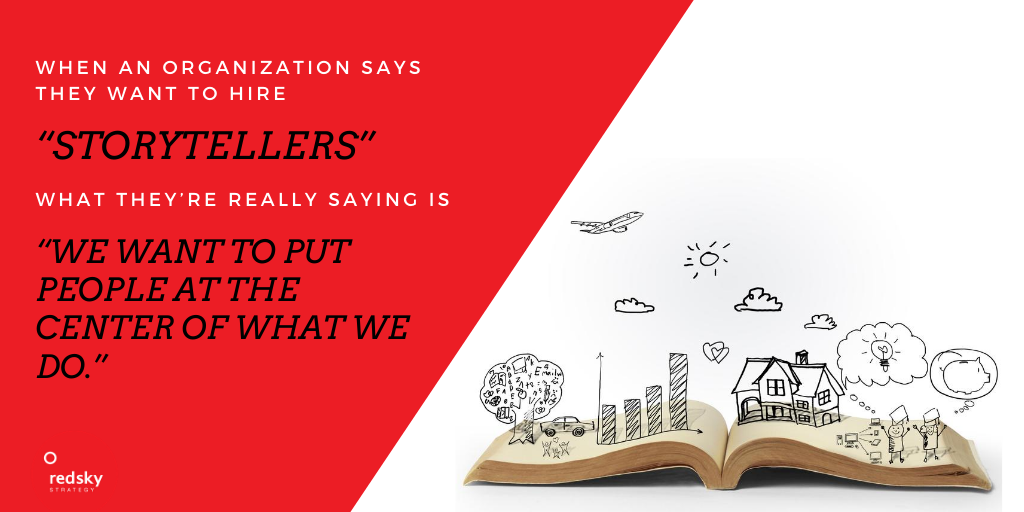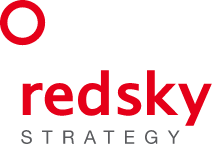News
‘Storytelling’ is not just a buzzword

By Hena Naghmi, Strategy Consultant
“ISO: Data Scientist. Must-have: masterful storytelling skills. Nice-to-have: Experience with Python, SQL, and/or R.”
Even the casual observer of the professional services job market will have noticed a trend in job descriptions over the past few years. Across functions and experience levels, employers are now asking that everyone from their social media strategist to their data scientists to their engineers have the ability to tell a story, especially with numbers. We’ve seen thinkpieces and TED talks galore that fetishize the importance of storytelling in the workplace. Be it a sales presentation or an analytical report, the ability to weave disparate details into a tale that engages the intended audience’s full mind and heart is viewed as the apex function of a professional services role.
In our haste to keep up, many organizations have slapped the word “storytellers” to their brand books or job descriptions without really thinking about what that means. What does it mean to be a compelling storyteller? And why is it important? How can organizations effectively use storytelling as a tool, and not just a buzzword?
‘Buts’ Over ‘Ands’
To answer this, I turn to my favorite deep, esoteric thinkers – comedy writers. Let’s start with the basic elements of a compelling story. When South Park writers Matt Stone and Trey Parker storyboard, they ensure that each story beat can be linked to the next using the words “therefore,” “but,” or “because.” Meaning, beats in a story should be linked by a causal relationship. If the word “and” can link the beats of your story, then your writing is lazy and needs sharpening.
One example of pitch-perfect causal storytelling is Seinfeld. Watch any episode of the show and you’ll notice that what happens in one scene does not exist in a vacuum but in fact has a meaningful, probably cringy impact on subsequent scenes. And each of the different storylines, while seemingly unraveling on separate planes, dovetail together by the end of the 22-minute masterpiece to leave your brain feeling satiated. Each beat within a storyline and each storyline within the story has an effect on the other. Nothing in a well-told story can exist in a vacuum.
Characters Welcome
The next component of a good story is perhaps even less obvious, but maybe even more crucial than the last. A well-told story must have a character-driven plot. That is, the action of the story and all of those causally-related beats must be steered by the attitudes, behaviors, and choices that characters make. Characters are so central to a good story that an entire television network staked its value on that one simple premise (USA Network: “Characters Welcome”). That’s because stories are designed to help us better understand humanity. At the core of every good story is truth about the human condition. We use relatable, emotional stories as a heuristic to help us understand life.
Seinfeld is also a great example of this second pillar of storytelling. The show self-awaredly is about “nothing” (see: Season 4’s meta-story arc where Jerry and George sell a pilot for a show about nothing). If you laid out the beats of a Seinfeld script and removed any of the character nuances that define the show, you’d be left with a rather strange sequence of events which, while related, are neither interesting nor meaningful (“what do you mean Jerry accidentally agrees to wear a puffy shirt resulting in the end of George’s fledgling hand modeling career?”). What gives meaning to a story is how its characters’ behaviors, attitudes, and choices impact the world.
So What?
What does that mean for how organizations can use storytelling? Should an organization have an arsenal of fleshed-out characters with fatal flaws; some protagonists, a few antagonists, maybe a couple of anti-heroes? No, not at all. (Though defining your brand’s own character and identity is certainly a worthy endeavor). What I’m pointing out is that when an organization says they want to hire “storytellers,” what they’re really saying is “we want to put people at the center of what we do.” We want data scientists who understand that data points are not just numbers, but are meant to represent real people and their unique attitudes, behaviors, and choices. We want engineers who aren’t just focused on finding the most elegant piece of code to achieve what they see as important, but are instead focused on putting the customer experience and benefits at the forefront of their development. We want social media strategists who aren’t just looking to jump on trend bandwagons, but are earnestly seeking to understand their audiences and tell them a story that will resonate with them.
As organizations, when we seek to use storytelling as a tool, we must keep in mind that at its core, a story is a series of related events that is happening to and because of the characters in that story. At RedSky Strategy, we call this principle HumanSight. We strive to deliver humanity and causality into everything we do, whether it’s how we approach our research, how we develop strategy, how we think about innovation, or how we think about our clients’ brands, we’re always looking for the story that underpins what we’re doing, and what that story reveals about the people we are trying to help or understand.
We know we’re a little obsessed with storytelling. We’ve dissected it and embedded it so deeply in our DNA that we have an entire research methodology that leverages this very principle (stay tuned for our upcoming piece on Indaba, Zulu for ‘storytelling’). If your team is also looking for ways to meaningfully use storytelling to understand or to speak to your customers, give us a call. We’d love to be your storytelling, data-scientist unicorns.
